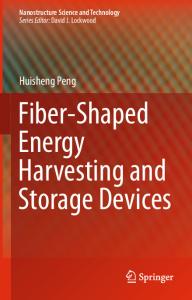Metalized carbon nanotubes as a conductive material for energy storage devices
- PDF / 389,839 Bytes
- 7 Pages / 584.957 x 782.986 pts Page_size
- 25 Downloads / 372 Views
Glauconix, Inc., Albany, NY 12203; and Colleges of Nanoscale Science 1 Engineering SUNY Polytechnic Institute, Albany, NY 12203
Eric Eisenbraun and Sarah Ashmeg
Colleges of Nanoscale Science 1 Engineering SUNY Polytechnic Institute, Albany, NY 12203 (Received 13 January 2016; accepted 20 June 2016)
Herein is described the preparation and characterization of conductive materials for application in energy storage devices, such as fuel cells. The synthetic approach uses commercially available materials and simple experimental procedures to decorate multi-walled carbon nanotubes (MWCNTs) with plain and thiolated gold nanoparticles (Au NPs). The compositional characterization data (x-ray photoelectron spectroscopy) and the electrical conductivity data (cyclic voltammetry (CV) and oxygen reduction reaction (ORR)) for the MWCNT-Au NP composites, both pre- and post-anneal, is reported.
I. INTRODUCTION
Micro fuel cells have many advantages including high reaction surface area, high process efficiency, and more efficient use of materials.1 They can be scaled up by stacking components according to the power requirement and provide power in the milliwatt to kilowatt range. Additionally, current fuel cell manufacturing is error prone and labor intensive due to the large number of individual components required for assembly.2 Hence, a critical growth step for the fuel cell industry is to develop a fuel cells technology that uses standard micro-fab processes to provide a monolithic device that replaces the “layer cake” styled structure. Low temperature co-fired ceramics (LTCC) is a low cost material that offers thermal, mechanical, and chemical stability. Additionally, LTCC allows the flexibility of integrating sensors, micro-channels, capacitors, heating elements, and interconnects among other components into a layered monolithic structure.3 Hence, it is desirable to develop a multi-layered microfluidic and monolithic device utilizing LTCC and ceramic metal composites that has the potential to provide a step change in cost and performance. Materials comprising carbon nanotubes (CNTs) decorated with Au NPs have been explored by many researchers4,5 and applied to many applications including, but not limited to, electrochemical sensors, biosensors, and fuel cells. The CNT-Au NP composites have very Contributing Editor: Paul Muralt a) Address all correspondence to this author. e-mail: [email protected] b) Present address: 1 Eastview Dr, #7, Watervliet, NY 12189. DOI: 10.1557/jmr.2016.254
unique mechanical, chemical, thermal, and electrical properties owing to the high tensile strength of the CNTs and small size (1–5 nm) of the Au NPs. There are many established procedures in the literature for preparing the CNT-Au NP composites for various applications.4,5 The Au NPs can be attached to the CNTs covalently via a variety of different chemistries or they can be simply adsorbed onto the surface of the CNTs due to supramolecular forces which include electrostatic and hydrophobic interactions. To achieve the goal of developing a LTCC m
Data Loading...











